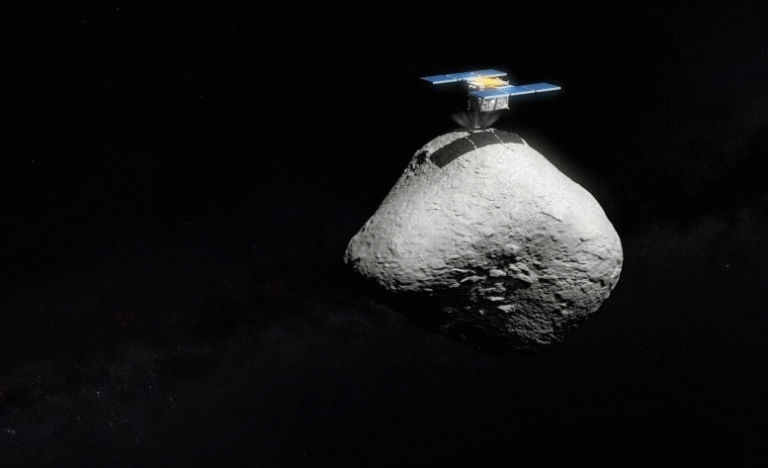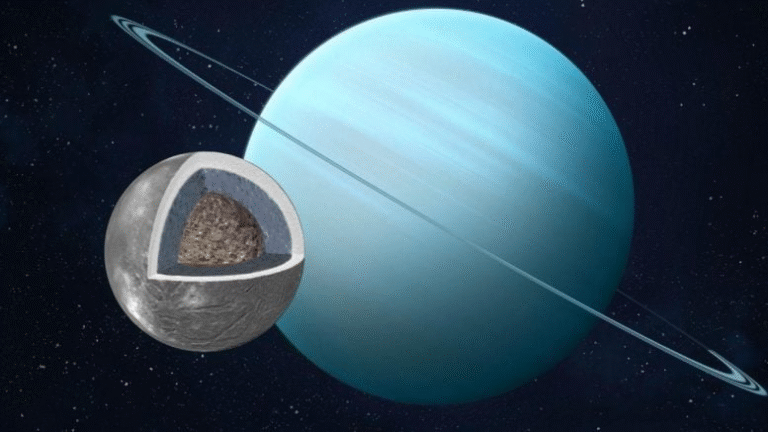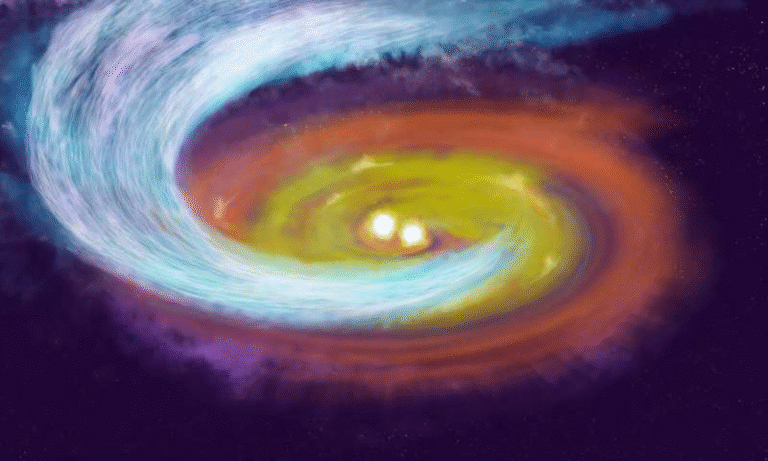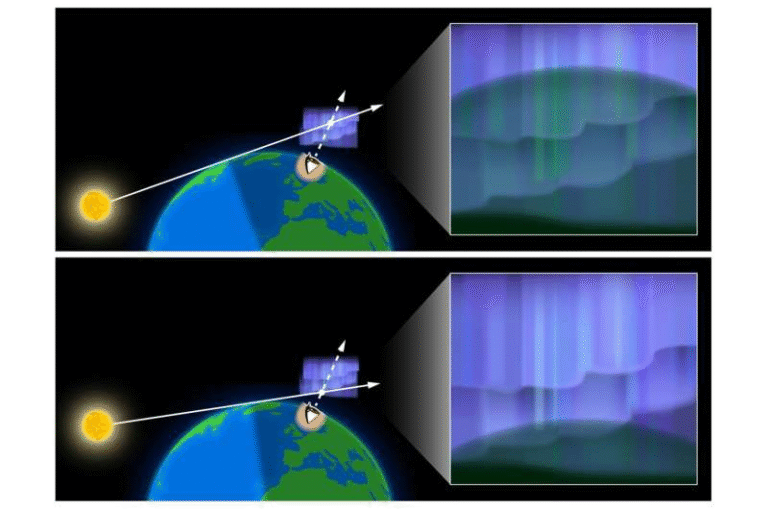Mysterious “Universe Breaker” Red Dots Could Be Black Hole Stars

Astronomers using the James Webb Space Telescope (JWST) have stumbled upon some of the most puzzling objects in the cosmos: small, faint red pinpoints of light from the early universe that appear to defy conventional explanations. These objects, nicknamed “universe breakers”, may not be galaxies as once thought, but instead a completely new category of cosmic body—black hole stars.
This discovery, published in Astronomy & Astrophysics in September 2025, could represent a missing link in understanding how supermassive black holes formed and grew rapidly only a few hundred million years after the Big Bang.
The Discovery of the Little Red Dots
When the first JWST data became available in 2022, researchers noticed puzzling “little red dots” scattered across the deep sky. At first, scientists suspected these were ancient, fully developed galaxies—similar in maturity to our Milky Way but existing only 500–700 million years after the Big Bang.

If that were true, it would have shaken up models of galaxy formation, because such mature galaxies shouldn’t have been able to form so quickly in the young universe. That’s why these faint objects earned the nickname “universe breakers”—they didn’t seem to fit into any established timeline of cosmic evolution.
A Different Explanation: Black Hole Stars
In the new study, researchers from Penn State University and the Max Planck Institute for Astronomy propose that the little red dots aren’t galaxies at all. Instead, they could be black hole stars—vast spheres of hot gas wrapped around a central supermassive black hole.
Here’s how it works:
- Unlike ordinary stars, which are powered by nuclear fusion, these giant gas spheres shine because the central black hole rapidly pulls in matter.
- As the black hole consumes this gas, it converts the infalling matter into energy and light, radiating outward through the surrounding envelope of gas.
- The outer layer of the gas sphere resembles the cooler atmospheres of small, faint stars, giving these objects their distinctive red glow in JWST’s infrared observations.
This explanation makes sense of why the red dots appear bright yet compact, and why their light doesn’t match expectations from clusters of ordinary stars.
The Role of Cold Stars in the Mystery
To understand the comparison, it helps to know that cold stars—low-mass stars with cooler surface temperatures—emit faint red and infrared light. They make up the majority of stars in the universe but are difficult to see because brighter, hotter stars usually overshadow them.
The light from the little red dots detected by JWST looks very similar to the glow of cold stars. But in this case, the signal doesn’t come from countless tiny stars packed into galaxies. Instead, it seems to come from one enormous gas envelope surrounding a black hole, mimicking the spectrum of many small stars.
This unusual combination—a black hole generating energy, cloaked inside what looks like a star’s atmosphere—leads astronomers to describe these objects as giant, cold black hole stars.
Seeing Back in Time
One of JWST’s primary missions is to study the early universe. By capturing infrared light that has traveled billions of years across space, JWST allows astronomers to peer back to around 13.5 billion years ago, close to the beginning of cosmic history.
From its first observations, JWST revealed red dots that appeared far too massive and bright for their age. If these were truly mature galaxies, the stars would need to be packed at physically impossible densities to match the brightness.
That contradiction fueled the search for alternative explanations—and eventually led researchers to the black hole star model.
The Case of “The Cliff”
The breakthrough came in July 2024, when researchers spotted an extreme example among the red dots. They nicknamed this object “The Cliff”, because its properties seemed to represent the steepest challenge yet to existing models.
- The object is so distant that its light has traveled 11.9 billion years to reach Earth.
- Spectra from JWST revealed enormous mass and unusual emission features, inconsistent with normal galaxies.
- Instead of clusters of stars, the data suggested a supermassive black hole cocooned in a glowing hydrogen envelope.
This discovery forced astronomers to rethink their assumptions and develop new models that could explain these strange red sources.
Why Black Holes Matter
Most galaxies, including our Milky Way, harbor supermassive black holes at their centers, millions or billions of times heavier than the Sun. But one of astronomy’s biggest questions is: How did these giants form so quickly in the early universe?
The black hole star idea could solve that mystery. If these red dots are indeed black hole stars, they may represent the infancy stage of supermassive black holes. In this scenario, black holes formed inside dense gas envelopes, feeding rapidly and glowing like stars. Over time, these objects could evolve into the colossal black holes seen at galaxy centers today.
The Spectral Evidence
To dig deeper, researchers collected nearly 60 hours of JWST time between January and December 2024, measuring the spectra of more than 4,500 distant galaxies. Spectroscopy provides a detailed fingerprint of light, showing how much is emitted at different wavelengths.
When they examined the red dots, particularly The Cliff, they found:
- A spectrum dominated by cold gas signatures, not the blazing hot gas typically associated with black holes.
- A strong Balmer break—a sharp change in brightness across wavelengths—caused by dense hydrogen gas absorbing light.
- Features that closely resemble atmospheres of low-mass stars, but on an enormous, unprecedented scale.
This evidence points away from star-packed galaxies and toward giant gas cocoons around black holes.
The Extreme Nature of Black Hole Stars
What makes these objects extraordinary is how they defy conventional categories. Black holes are usually surrounded by blazing hot disks of gas at millions of degrees. Yet the little red dots are dominated by very cold gas, creating a strange hybrid object.
Researchers now think black hole stars could act as turbocharged mass builders, rapidly feeding their central black holes in a way that standard models struggle to explain. This could finally help solve the long-standing problem of how supermassive black holes emerged so early in cosmic history.
Challenges and Open Questions
Although the black hole star explanation fits much of the data, astronomers emphasize that this is still a hypothesis. Many questions remain:
- How stable are these massive gas envelopes?
- Can they survive long enough to significantly grow their black holes?
- Why does the gas remain cold, rather than heating up to millions of degrees like in normal accretion disks?
- How common are these objects across the universe?
Future JWST observations, along with X-ray and radio telescopes, will test these ideas further. Variability studies (checking if these objects flicker like black holes often do) will also help confirm their nature.
Why This Matters for Cosmology
If black hole stars are real, they could reshape our understanding of both galaxy formation and black hole growth. Instead of black holes slowly building mass over billions of years, they may have experienced a rapid, star-like growth phase in the early universe.
This would mean:
- Early black holes formed faster than expected.
- Some of JWST’s puzzling red dots are not galaxies at all.
- Cosmological models will need updating to account for this new class of object.
Extra Knowledge: Black Holes in General
To better appreciate this discovery, let’s briefly cover some basics about black holes:
- Formation: Most black holes form when massive stars collapse at the end of their lives. Supermassive black holes, however, remain mysterious. They may have started as massive “seeds” that grew quickly, or as direct-collapse black holes forming from primordial gas clouds.
- Event Horizon: A black hole’s boundary, the point beyond which nothing—not even light—can escape.
- Accretion Disks: Gas and dust spiraling into a black hole heat up, glowing brightly. This is how we normally detect black holes, not by the black hole itself.
- Role in Galaxies: Black holes regulate galaxy growth through energetic outflows that shape star formation.
The idea of black hole stars adds a new twist: in the early universe, some black holes may not have had accretion disks in the usual sense but instead shone from within giant, cold, star-like atmospheres.
What Comes Next
Researchers are already planning future work:
- Mapping how common these red dots are across different cosmic eras.
- Studying the density and turbulence of the gas around black hole stars.
- Testing whether these objects can sustain the super-Eddington accretion needed to grow black holes so rapidly.
- Refining simulations to see how these exotic objects evolve over time.
Every new observation brings astronomers closer to answering one of the biggest questions in cosmology: Where did the universe’s first supermassive black holes come from?
Final Thoughts
The mysterious red dots seen by JWST may not be breaking the universe after all. Instead, they could be revealing an entirely new phase of cosmic evolution—black hole stars that bridge the gap between primordial gas clouds and the giant black holes that dominate galaxies today.
As one researcher put it, the universe often turns out to be stranger than we imagine. And these strange little red dots may just be the next big clue in solving the puzzle of our cosmic origins.





